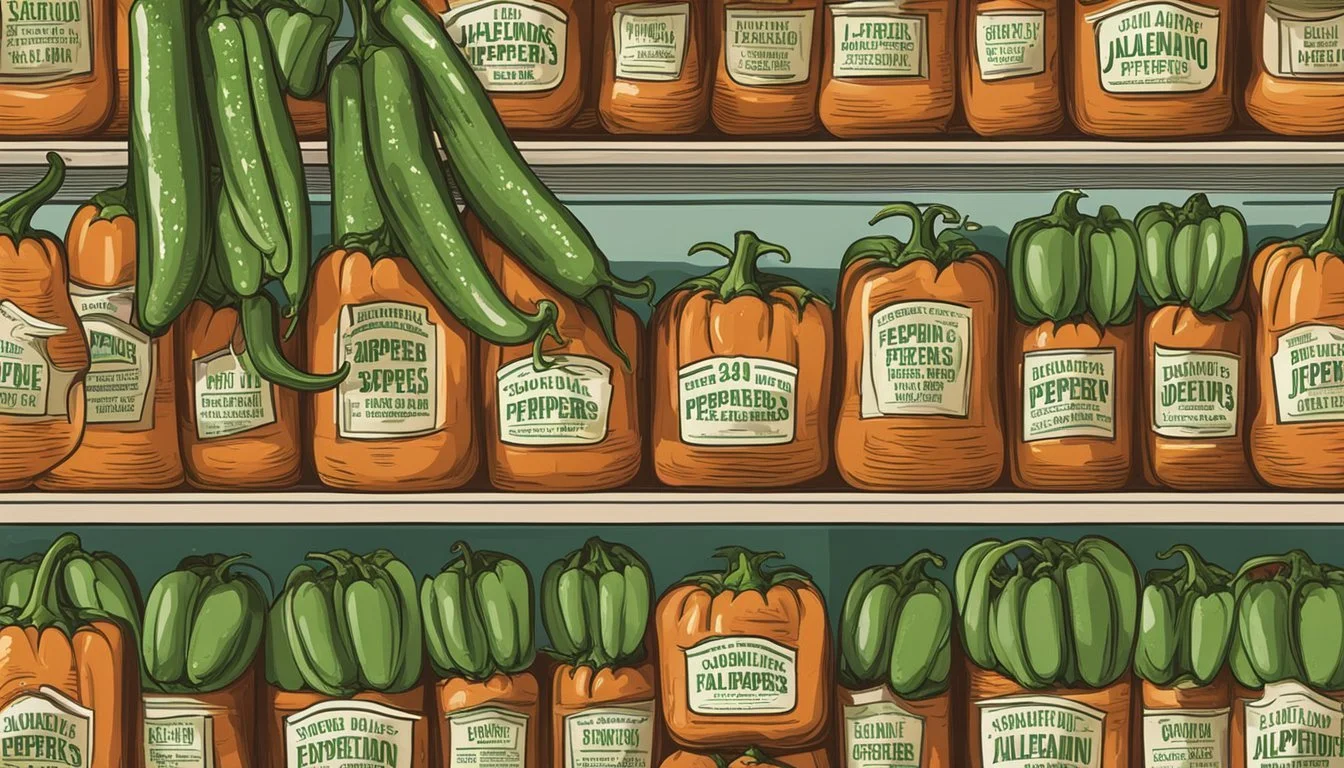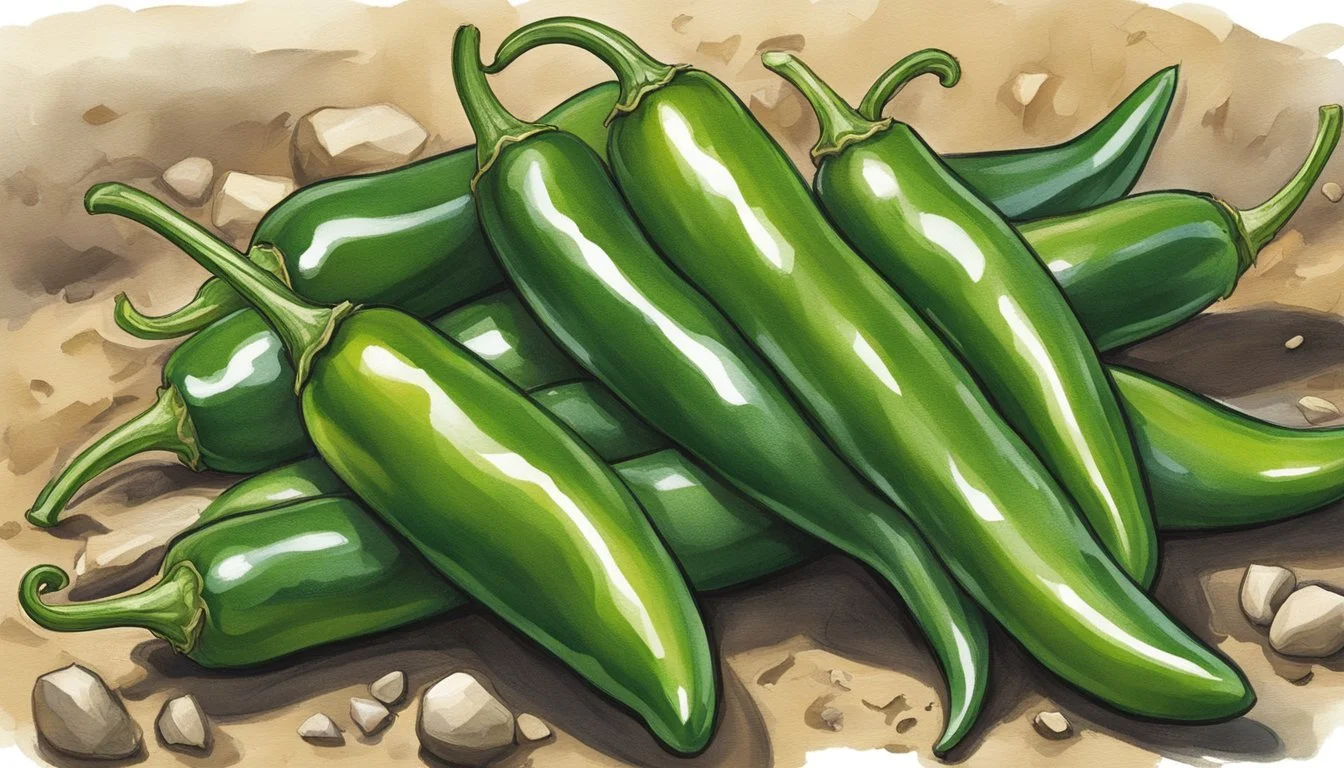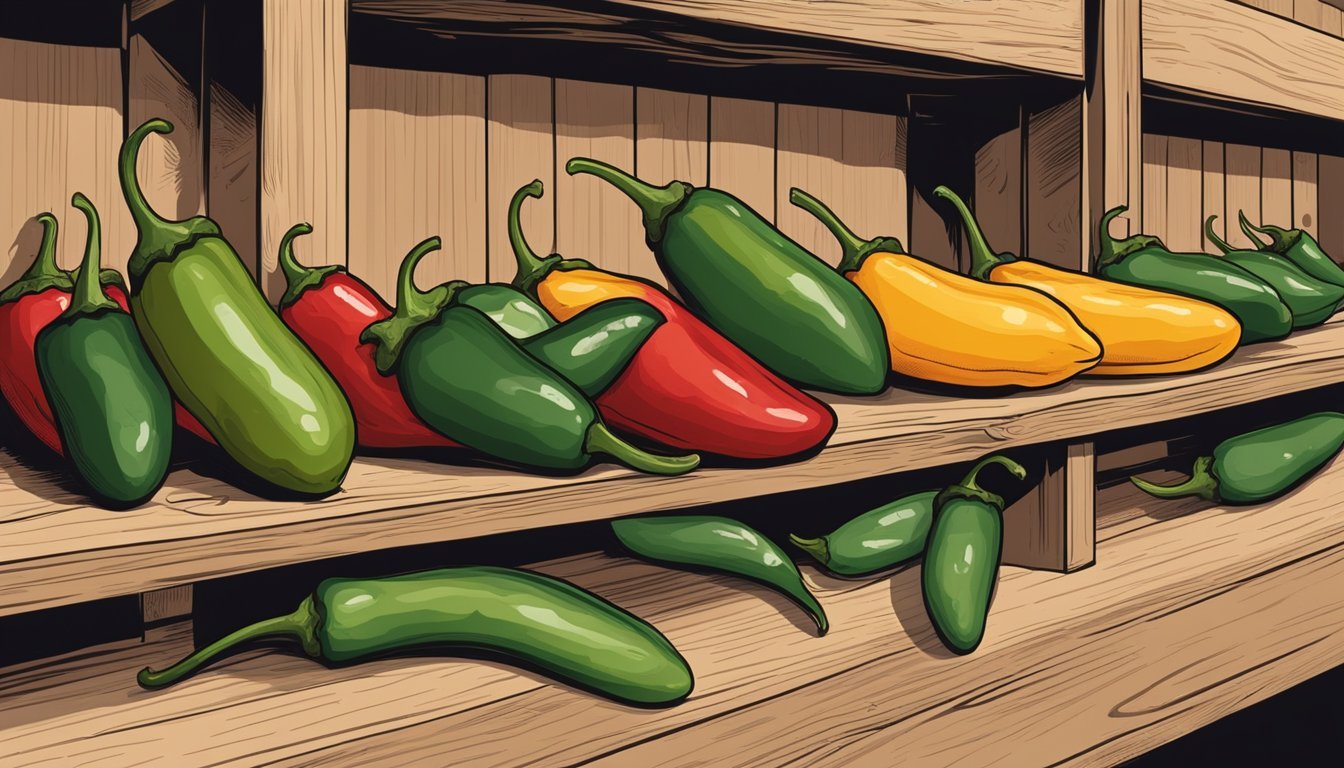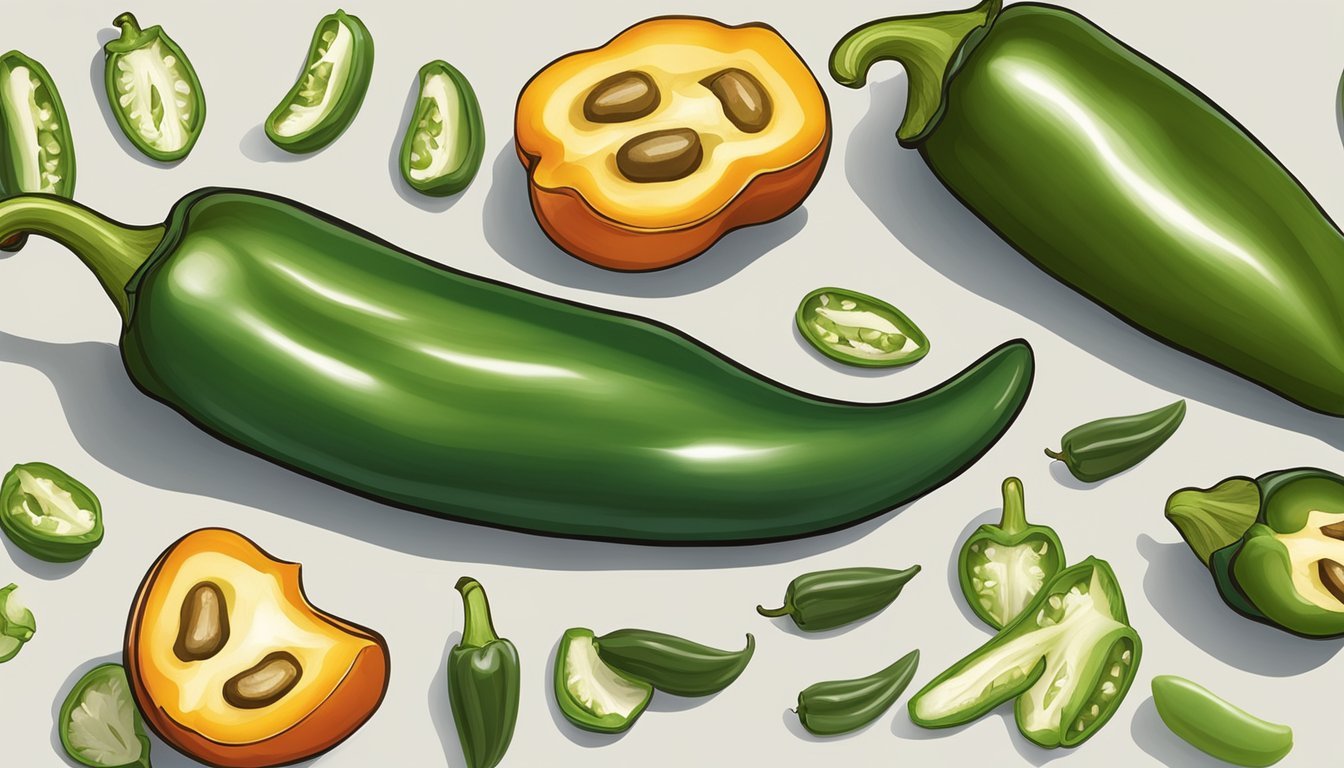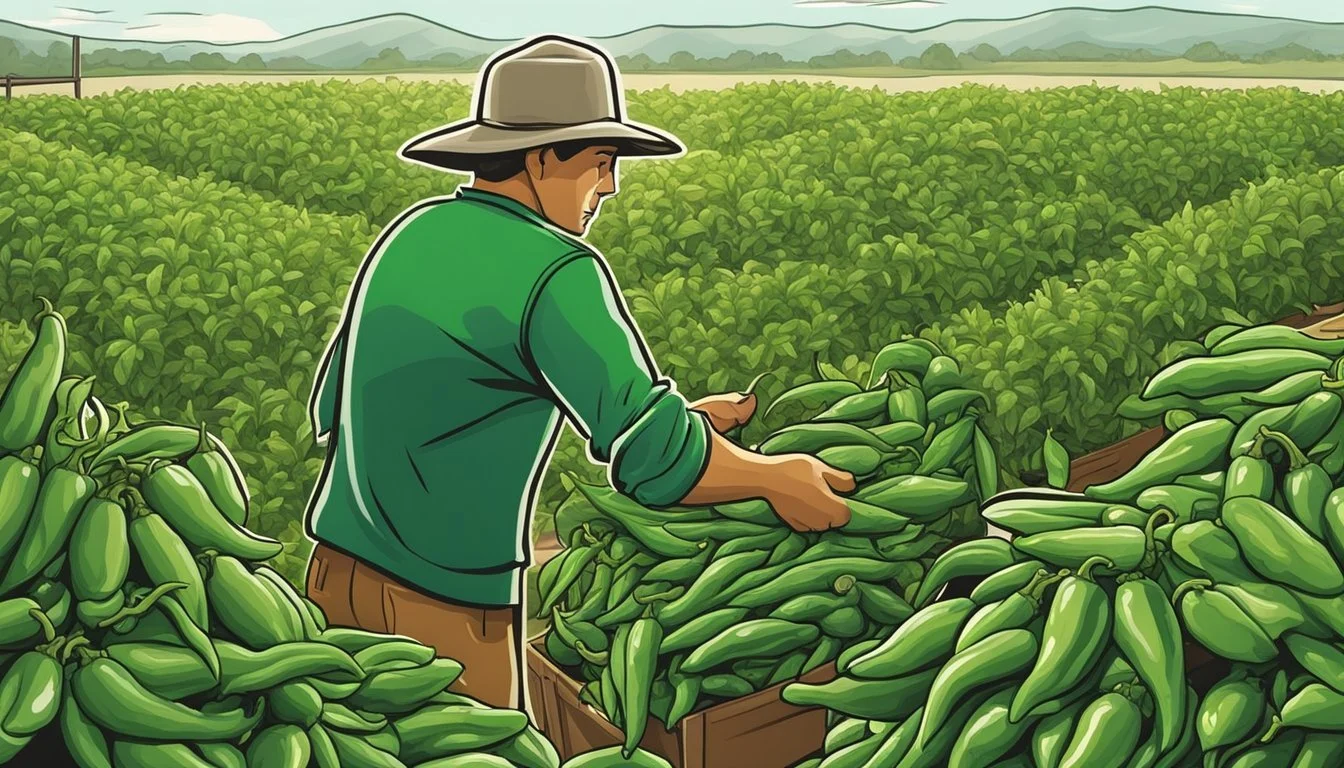How Long Do Farm Rich Jalapeño Peppers Last?
Storage Tips & Shelf Life
Are you a fan of Farm Rich Jalapeño Peppers and wondering how long they last before losing their freshness? You're not alone. Many people stock up on these spicy snacks but aren't sure how to maximize their shelf life. Farm Rich Jalapeño Peppers, when stored correctly, can last several months in the freezer, giving you ample time to enjoy them at your leisure.
Storage and care are crucial to prolonging their freshness. If kept in the pantry at room temperature, expect them to last around 3 to 5 days while refrigerating will extend their life to 2 to 3 weeks. For those looking for long-term storage, freezing is an excellent option where they can be kept for 6 to 12 months.
Caring for your Farm Rich Jalapeño Peppers properly involves more than just knowing where to store them. Ensuring they are tightly wrapped and sealed minimizes exposure to air, which helps maintain their flavor and texture. By following these guidelines, you can have a delicious, spicy snack always ready to go.
Understanding Jalapeño Peppers
Jalapeño peppers are a widely recognized variety of chili peppers known for their medium heat and versatile flavor. Originating from Mexico, these peppers have gained global popularity for their culinary uses.
The jalapeño pepper typically measures 2-3.5 inches in length. When unripe, they appear light green, and as they mature, they turn dark green or even red.
Heat and Flavor Characteristics:
Heat: Jalapeños have a Scoville heat unit (SHU) rating of 2,500 to 8,000, placing them in the medium heat category.
Flavor: They offer a fresh, crisp taste with a slight sweetness that complements their heat.
Growth Stages:
Seedling: Early weeks of germination.
Adolescent: 3-4 weeks, rapid growth.
Growth: 4-8 weeks, pepper formation begins.
Maturation: 2-4 months, peppers reach full size.
Flowering: Bloom of white flowers.
Fruiting: Peppers fully develop and ripen.
Peppers can be used fresh, pickled, or cooked, making them a staple in a variety of dishes. They are commonly featured in salsas, stuffed appetizers, and as a topping for nachos and pizzas.
To harvest, jalapeños should be picked when they are firm and glossy. They typically grow pointing downward, making it easy to snap them off with an upward motion.
Quality storage practices extend their shelf life, ensuring they remain fresh and flavorful for various culinary applications.
Growth and Cultivation
Jalapeño peppers thrive under the right growing conditions. They start from seeds, usually germinating in 10 to 14 days under warm conditions, ideally between 70-85°F. It's critical to plant them in well-drained, fertile soil enriched with organic matter and compost.
These plants prefer a slightly acidic pH level, around 6.0 to 6.5. Full sun exposure is essential, requiring at least 6-8 hours of sunlight per day. If growing indoors, artificial lighting helps simulate these conditions.
During the seedling stage, proper care includes maintaining consistent moisture levels and providing support, such as staking. Transplant the seedlings to the garden or larger containers once they have a few true leaves and the threat of frost has passed.
Plant spacing is crucial; space them at least 18 inches apart to ensure proper airflow and prevent disease. Regularly check for insects and stress signs, which can impact plant health.
By the time they reach the growth stage, jalapeños benefit from weekly feedings of a balanced fertilizer high in nitrogen.
Pollination occurs naturally outdoors, though some gardeners hand-pollinate indoors to encourage fruit set. The fruiting stage typically occurs 2-4 months after planting.
Consistent watering without over-saturation keeps the soil moist but not waterlogged. Avoid overhead watering to reduce fungal risks. Mulching can help retain moisture and control weeds.
Keep in mind that environmental stress, such as wind and temperature fluctuations, can hinder growth. Protecting the plants with row covers or similar methods helps maintain stability.
Fresh jalapeños are typically ready for harvest when they are firm, green, and around 2-3 inches long. For a spicier pepper, let them ripen to a red color before picking.
Ideal Growing Conditions
Jalapeño peppers thrive in warm climates with temperatures ranging from 70 to 90 °F (21 to 32 °C). They can be grown outdoors or in containers, making them versatile for various gardening setups.
These plants need full sunlight, at least 6 to 8 hours per day, to flourish. Adequate sun exposure ensures robust growth and pepper production.
When it comes to soil, jalapeños prefer soil that is slightly acidic, with a pH level between 6.0 and 7.0. Incorporating compost or organic matter can improve drainage and provide essential nutrients.
Transplanting should occur after the risk of frost has passed. Typically, seedlings are started indoors and then moved outdoors once they have several leaves and are sturdy.
Watering needs are crucial. Jalapeños require consistent moisture but should not be waterlogged. Aim to keep the soil moderately moist. Mulching can help retain moisture and regulate soil temperature.
Fertilizer is important for jalapeños. A balanced fertilizer with a ratio of 5-10-10 or similar is recommended. This ensures an appropriate supply of nitrogen, phosphorus, and potassium, supporting both growth and fruit development.
Monitoring moisture levels is key. Overwatering can lead to root rot, while underwatering can stress the plants. Drip irrigation systems work well for maintaining a consistent moisture level.
By following these guidelines, jalapeño plants can reach their full potential, providing a bountiful harvest.
Harvesting and Post-Harvest Care
It is crucial to harvest jalapeños at the proper time and manage post-harvest care to ensure they remain fresh and flavorful. This involves identifying optimal picking times, understanding corking and dark spots, and storing the peppers correctly.
Timing and Techniques for Harvesting
Jalapeño peppers should generally be harvested when they reach 3-5 inches in length, feel firm, and have a deep green or red color, depending on their ripeness. Unripe green peppers offer a subtler heat, while fully ripened red jalapeños are spicier and slightly sweeter. To harvest, use clean scissors or a sharp knife to cut the stem, avoiding damage to the plant. Consistent watering and proper soil care are key to obtaining high-quality peppers.
Maximizing Flavor and Heat
Green jalapeños provide a milder flavor, while red jalapeños are known for their increased heat and sweetness. To maximize these qualities, pick peppers at different stages of ripeness based on preference and intended use. For a milder taste, harvest while green. For a more intense heat, let the peppers turn bright red. Storing them in a cool, dry place helps maintain their flavor and heat. Consider drying or freezing for long-term storage.
Understanding Corking and Dark Spots
Corking refers to the natural lines or striations that appear on jalapeños as they mature. These lines are not harmful and are often considered a sign of a mature, flavorful pepper. Dark spots, on the other hand, can indicate overripeness or exposure to excessive moisture. It's essential to differentiate between harmless corking and potential spoilage. Pick peppers that have firm skin and minimal dark spots for the best quality.
Following these guidelines will help ensure that farm rich jalapeño peppers are harvested and stored with care, preserving their unique flavor and heat attributes.
Storing Jalapeño Peppers
To maintain the freshness of jalapeño peppers, proper storage is essential. When kept in the fridge, place whole peppers in a plastic bag and store them in the crisper drawer. This method can extend their shelf life up to two weeks.
For longer preservation, freezing is an excellent option. Remove the stems, place the peppers in a plastic bag, and remove as much air as possible before sealing. Frozen jalapeños can last up to one year.
Pickling is another method to store jalapeños. Slice the peppers, pour hot brine over them in a jar, seal, and refrigerate. Pickled jalapeños can stay fresh for several months.
For those who purchase jalapeños from the grocery store, storing them in the pantry at room temperature can keep them fresh for about 3 to 5 days.
When storing jalapeños, always inspect them for mold or dark spots. Remove any rotting or affected peppers immediately to prevent spoilage of the others.
Sliced or cooked jalapeños should be kept in airtight containers in the fridge and consumed within a few days for best quality.
Cooking and Food Pairings
Farm Rich Jalapeño Peppers are versatile in the kitchen. They can be cooked using different methods such as baking, air frying, or grilling. Preheat your oven or air fryer to about 375 degrees F. Cooking times are usually 10 minutes, with flipping halfway through for even crispiness.
These peppers pair excellently with a variety of foods, enhancing flavors with their distinctive spice. They can be used in dishes like Huevos Rancheros, adding not just heat but also a depth of flavor.
For quick snacks, try pairing them with Farm Rich Homestyle Meatballs. Secure a meatball and a jalapeño pepper on a toothpick and serve with a honey lime yogurt dip.
Farm Rich Jalapeño Peppers can be an excellent complement to cheese dips or sauces. Slice them and add to nachos for an extra kick, or incorporate them in quesadillas with melted cheese.
These spicy treats work well with other chili peppers like Serrano, Habanero, Cayenne, or Tabasco, creating a medley of flavors that chili pepper enthusiasts will appreciate. A sprinkle of salt can enhance their taste, making them a simple yet flavorful option straight from the grocery store.
Incorporating these peppers into your meals adds spice and depth, making them a versatile option for various culinary creations.
Cultivation Challenges and Solutions
Growing jalapeño peppers can present several challenges. Addressing these effectively ensures healthier plants and better yields.
Pests: Common pests include aphids and spider mites. Regular inspection and the use of natural predators, like ladybugs, can help control these.
Diseases: Fungal infections, like powdery mildew, can affect jalapeños. Proper spacing and air circulation reduce this risk. Using a well-draining potting mix helps prevent root rot.
Stress
Peppers may experience stress from improper watering, temperature fluctuations, or nutrient deficiencies. Consistent watering practices and protecting plants from extreme temperatures can mitigate stress.
Overwintering: Jalapeños need protection from frost. Indoors, place them near a sunny window or under grow lights. In milder climates, mulching around plants can help retain warmth.
Indoors: For colder regions, growing jalapeños indoors is feasible. Ensure they get at least 6-8 hours of light daily, using grow lights if necessary.
Transplanting: Transplant young plants carefully to avoid root damage. Harden them off by gradually exposing them to outdoor conditions over a week.
Growing Conditions
Jalapeños thrive with 14-16 inches of space between plants to promote airflow and reduce disease risk. They need full sunlight, meaning at least six hours of direct light daily.
Gardening resources, such as those provided by MasterClass, offer valuable insights for both novice and experienced gardeners. Each season provides an opportunity to refine techniques based on prior experiences, making each harvest a learning experience.
Special Offers and Promotions
Farm Rich Jalapeño Peppers frequently feature in special promotions at various grocery stores. Shoppers can often find these items on sale during seasonal events such as Father's Day.
Instacart offers contactless delivery, making it easy to receive these snacks at your doorstep. First-time orders may even include discounts.
Here are some current offers:
Grocery Store: Instacart
Promotion: First delivery free
Offer Ends Soon
They can also be found in bulk sizes, which are perfect for parties or gatherings. Keep an eye on special promotions to make the most of your purchase.


